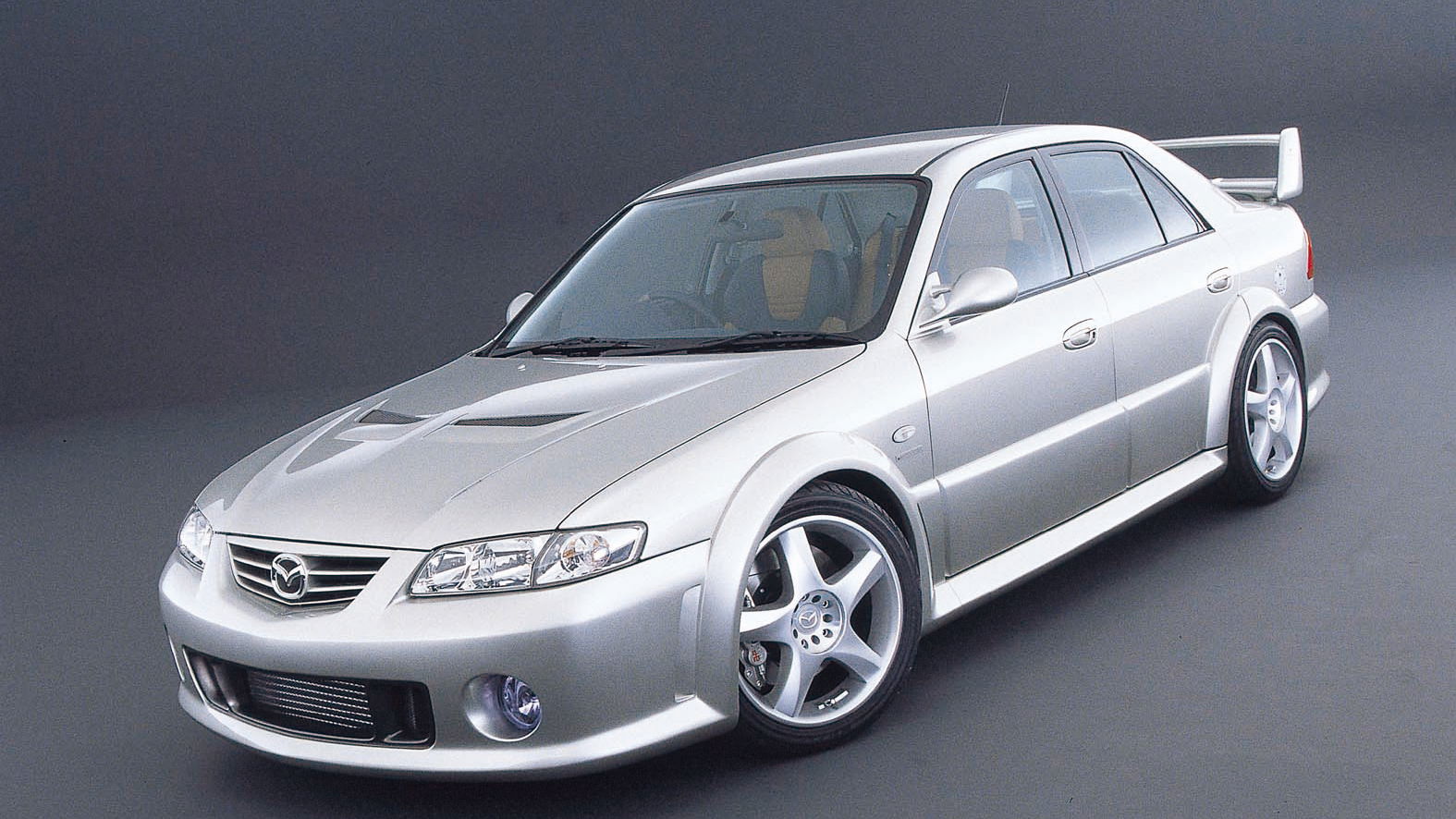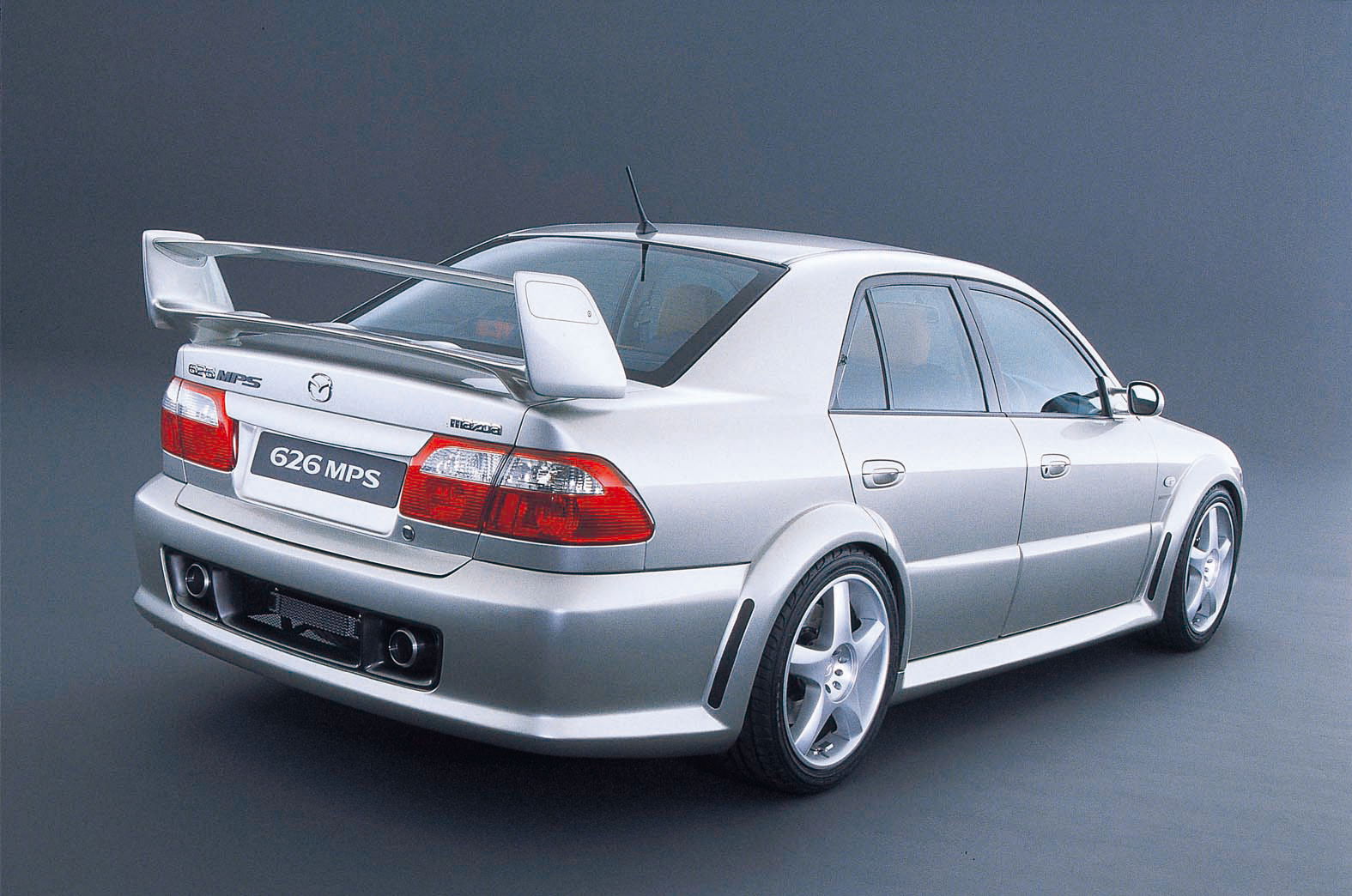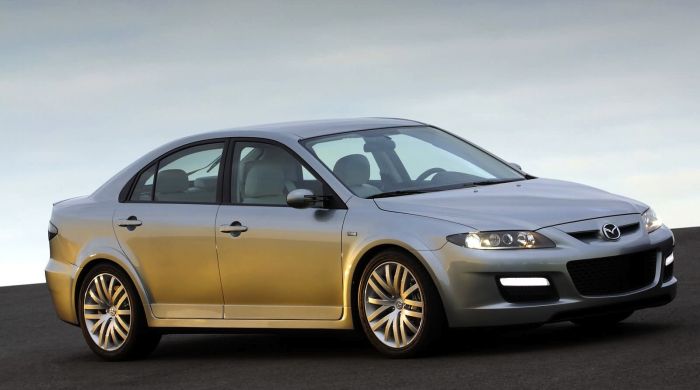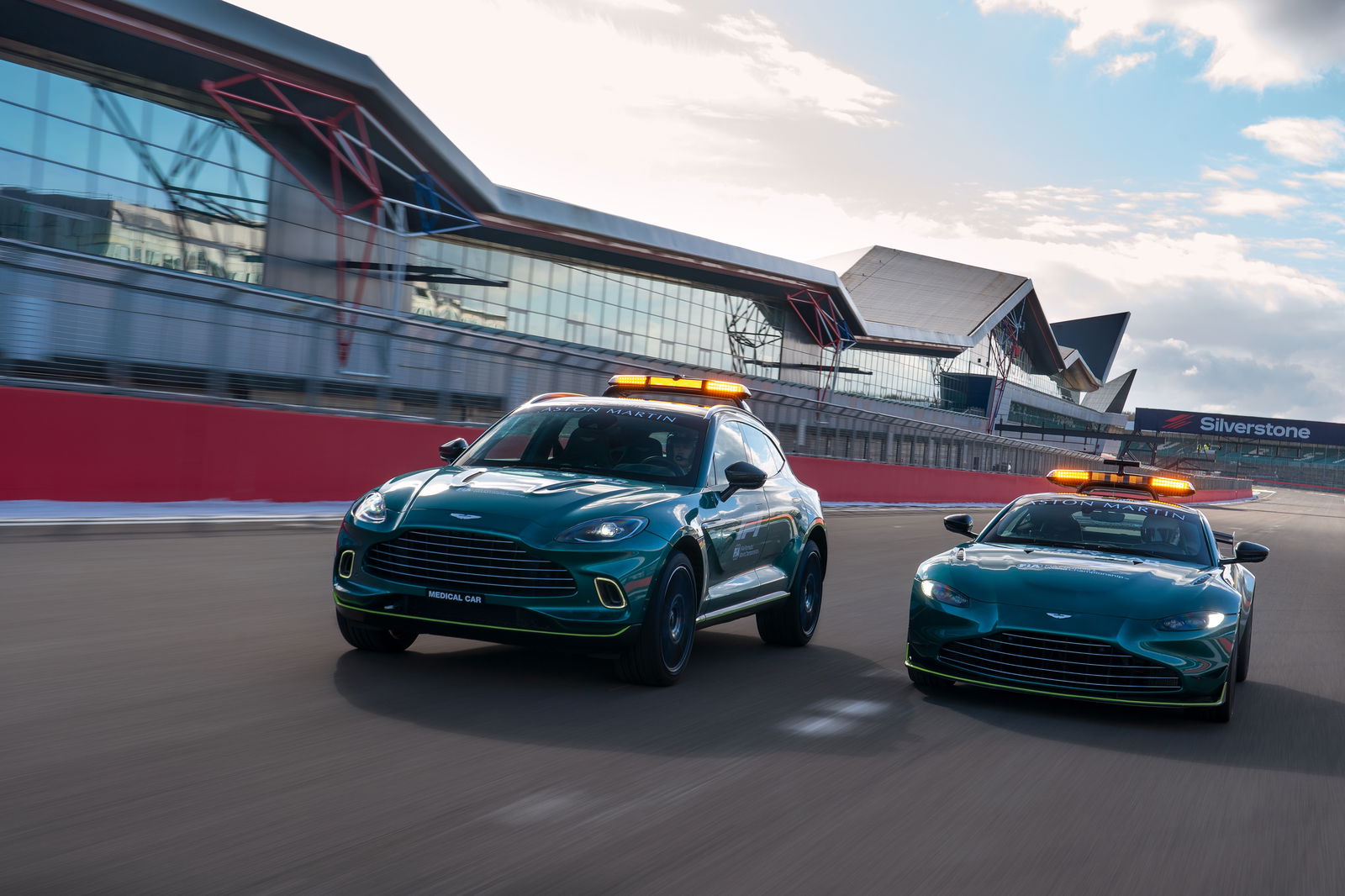That Time Mazda Built A Twin-Turbo V6 626 To Rival The Mitsubishi Evo

It’s beyond dispute that the world of affordable performance AWD in the late 1990s belonged to Subaru and Mitsubishi. The Impreza and Lancer Evo were both rally stars, proven at the highest level and full of race-bred potency and charisma.
A nearby third party looked on with envy. Mazda never really had the budget or appetite for a works WRC entry, but as a Japanese neighbour to the two heavyweights of the division, Mazda couldn’t ignore the success the head-to-head battle was bringing the two brands. Car guys and girls all over the world were either Impreza or Evo. You couldn’t be both; not back then. It was a party that brewed respect and Mazda wanted to sneak in via the back door.
One of the rarer cars at the Geneva Motor Show, at the 2000 show the Mazda stand featured the new Tribute, the Mazda Demio and the special Mazda 626 MPS concept. #tbt Geneva 2000. pic.twitter.com/CE9jhcmvY1
— Mazda UK PR (@mazdaukpr) March 4, 2021
Enter the 626 MPS at the 2000 Geneva Motor Show. Rumour has it only one was made and sadly it’s not publicly known what happened to it, but there it was: a remarkably ambitious riposte to the established players. MPS stood simply for Mazda Performance Series and the company wasn’t overstating the special 626’s potential. While the Evo and Impreza used turbocharged fours, the 626 was built around a twin-turbo V6 of similar capacity: 2.5 litres. It probably made it a bit heavier at the nose, but it was a hell of a USP – just the sort of ticket needed to get itself into the hottest showroom shindig in the industry.
This KL-ZE-series V6 wore larger radiator and intercooler hardware, an ECU upgrade and a freer-breathing exhaust. As per the established JDM convention at the time, official power was listed at 280bhp but was probably a good squeeze more than that. Torque was 289lb ft and tunnelled its way to all four wheels via a system Mazda never clearly detailed, other than that it was a permanent AWD setup. Performance was said to deliver sub-5.0-second 0-60mph sprints and a top speed around 150mph, all via a manual gearbox. Through a 2021 lens it sounds even more amazing than it must have done then.

Weight was said to be 1380kg, which was a touch heavier than the Evo and Impreza equivalents and probably reflected the extra size of the cylinder block. It had the necessary chassis tweaks to handle it, though, with a wider track, wider tyres on 18-inch alloy wheels and height-adjustable springs with multi-way adjustable dampers. Braking was handled by 345mm/315mm brake discs front and rear. Gripping those were whopping great six-pot calipers at the front and four-pot items at the back.
It looked fabulous and we can only imagine how it drove, but a production-ready version would have made a desperately tempting third option in the WRC battle that raged around the turn of the Millennium. Sadly the response Mazda felt it got to the car wasn’t enough to justify the expense of making it a reality. There was also the issue of the 626’s days already being numbered: the 6 was in development ready for its 2002 arrival and what was the point of launching a performance variant of a car that would be obsolete about 12 months after the hot one first hit public tarmac? If only Mazda had got the 626 MPS to Geneva in, say, 1996.

To add to the myth left behind, an orange Capella MPS appeared at the Tokyo Auto Salon later in 2000, but for all we know this was the same car wearing a new paint job. A 323 MPS then appeared at the British Motor Show that year, possibly as a nod to how much more the UK had liked the MPS idea than perhaps other nations did at the time. It only had 150bhp from a fairly ordinary inline-four, but it gave birth to directly-related special editions in Japan and the US. As for the 626, Mazda UK told us the prototype was “broken up many years ago”. No, I’m not crying, there’s something in my eye, OK?
Perhaps the oddest thing about this first appearance of the MPS badge was how long its direct successor took to arrive. Perhaps after 2002 Mazda’s directors were dithering over whether the WRC bubble had burst; whether the same commercial advantage was still going to be there for the car’s full model cycle. Maybe there were wranglings with then-sister company Ford. Whatever it was, the much-loved, ever-underrated 6 MPS only arrived in 2006 with a Ford-derived 2.3-litre turbocharged engine, owing to the fact that it was by then based on the same chassis as the Mondeo. The 626 MPS looked even better, though, and we’re a bit gutted that today’s classifieds aren’t at least home to a few.


Comments
Actually, the 2.3L DIZI engine was based on the Mazda L-series engine block, which Ford then took and modified (heads were redesigned, different turbochargers and internals were fitted) into its EcoBoost engine, still being used today - not the other way around.
A so-so looking Mazda with Evo 7 wing. Hehe. Pass.